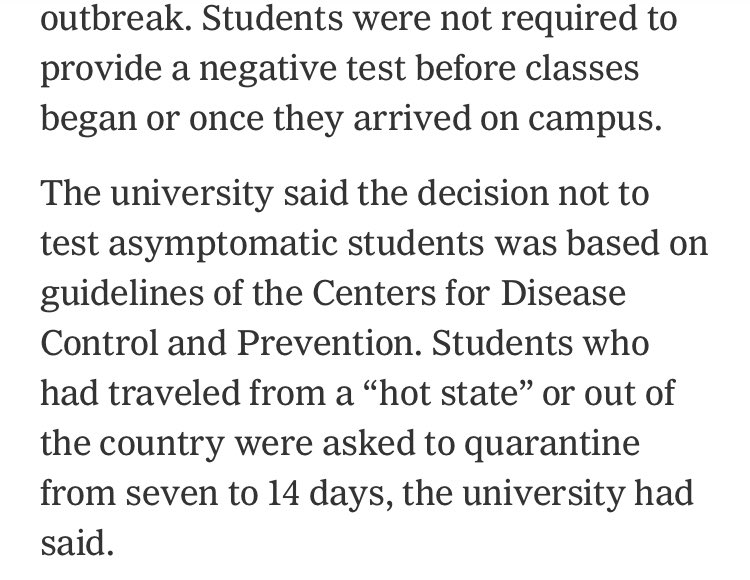
Strip away all the spin, the noise, the BS, and what's left is this:
This man's arrogant nonchalance is killing Americans.
Had this pandemic occurred under any other past administration, at least 100,000 fewer Americans would have died. And that is a conservative estimate.
This man's arrogant nonchalance is killing Americans.
Had this pandemic occurred under any other past administration, at least 100,000 fewer Americans would have died. And that is a conservative estimate.
https://twitter.com/atrupar/status/1317616804693463043
On some level it feel sensationalist to talk this way.
It feels like an all-caps-twitter way of talking about the impact of the President's performance.
But actually it just boils down to simple, tragic math.
It feels like an all-caps-twitter way of talking about the impact of the President's performance.
But actually it just boils down to simple, tragic math.
Can you honestly imagine another any past administration handling this as badly as Trump has?
For that matter, can you imagine any of the other GOP frontrunners from 2016 handling this as badly as Trump has?
For that matter, can you imagine any of the other GOP frontrunners from 2016 handling this as badly as Trump has?
Imagine a Rubio, Cruz, or Jeb administration.
I'd disagree strenuously with them on the whole range of standard policy stuff.
But I seriously doubt they'd be blocking expanded testing, listening to Scott Atlas over the CDC, ditching WHO, or telling people not to wear masks.
I'd disagree strenuously with them on the whole range of standard policy stuff.
But I seriously doubt they'd be blocking expanded testing, listening to Scott Atlas over the CDC, ditching WHO, or telling people not to wear masks.
Rubio and Cruz are complicit in all this now because they're too weak to challenge Trump.
But left to their own devices I suspect they'd default to doing what CDC advised them - if only out of a sense of political self-preservation.
But left to their own devices I suspect they'd default to doing what CDC advised them - if only out of a sense of political self-preservation.
Trump really is singular in this sense.
And the results are clear. Compared to peers like Canada or Germany, we have 117k - 169k more fatalities (proportionally) simply because the leadership of our response has been such a disaster.
And the results are clear. Compared to peers like Canada or Germany, we have 117k - 169k more fatalities (proportionally) simply because the leadership of our response has been such a disaster.
The point here isn't that great leadership would have saved 100,000+ lives.
It's that *normal* leadership would have achieved that.
The baseline performance we should expect from any President regardless of party would have achieved that.
It's that *normal* leadership would have achieved that.
The baseline performance we should expect from any President regardless of party would have achieved that.
Donald Trump's failed leadership is responsible for, conservatively, over 100,000 American deaths.
Saying so should not feel sensationalist.
It's just calling it what it is.
Saying so should not feel sensationalist.
It's just calling it what it is.
• • •
Missing some Tweet in this thread? You can try to
force a refresh






